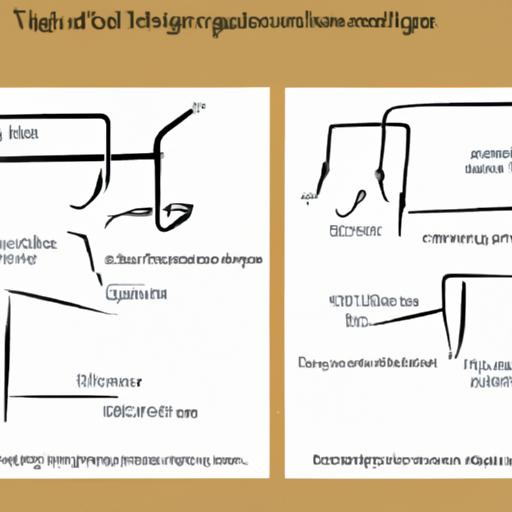MIG vs TIG for Home Use: Which Welding Technique is Right for You?
Introduction
When it comes to welding at home, selecting the right technique can make all the difference. Two popular methods that often come into consideration are MIG (Metal Inert Gas) and TIG (Tungsten Inert Gas) welding. In this article, we will explore the benefits, limitations, and key differences between these two techniques, helping you make an informed choice for your home welding projects.
A. Overview of MIG and TIG welding techniques
MIG welding, also known as Gas Metal Arc Welding (GMAW), is a versatile welding process that utilizes a consumable wire electrode and a shielding gas to join metals together. It excels in speed and efficiency, making it a popular choice for both professionals and hobbyists. On the other hand, TIG welding, or Gas Tungsten Arc Welding (GTAW), uses a non-consumable tungsten electrode and a separate filler material, if needed, to create precise and high-quality welds. TIG welding is renowned for its unparalleled control and is often favored for intricate and delicate work.
B. Importance of selecting the right welding method for home use
As a home welder, choosing the appropriate technique is crucial to ensure successful outcomes and a fulfilling welding experience. Each technique has its own set of advantages and limitations, which may impact factors such as cost, skill level requirements, welding speed, quality, versatility, and safety considerations. By understanding these aspects, you can make an educated decision that aligns with your specific needs and goals.
C. Brief comparison between MIG and TIG welding techniques
Before diving deeper into the details, let’s briefly compare MIG and TIG welding techniques. MIG welding is known for its ease of use, efficient welding speed, and suitability for thicker materials. TIG welding, on the other hand, offers unparalleled precision, excellent control, and is ideal for thinner materials and critical joints. Both techniques have their place in the welding world, but it’s essential to determine which one will best serve your requirements when it comes to home-based welding projects.
Now that we have laid the groundwork, let’s delve into the specifics of MIG and TIG welding techniques, their benefits, drawbacks, and how they compare in various aspects.
What is MIG Welding?
A. Definition and explanation of MIG welding
MIG welding, also known as Gas Metal Arc Welding (GMAW), is a welding technique that utilizes a wire electrode and a shielding gas to create strong and durable welds. The wire electrode, which acts as a filler material, is continuously fed through a welding gun, while the shielding gas protects the weld pool from atmospheric contamination. This process generates an electric arc that melts the wire and fuses it with the base metal, forming a solid joint.
B. Benefits and advantages of MIG welding for home use
MIG welding offers several advantages that make it an attractive option for home use. Firstly, it is relatively easy to learn and operate, making it suitable for beginners and DIY enthusiasts. The continuous wire feed and automatic shielding gas make the process more forgiving, allowing for faster progress and reducing the likelihood of defects. Additionally, MIG welding excels in speed and efficiency, enabling users to complete projects quickly. This aspect is particularly beneficial for larger and thicker materials, where the high deposition rate of MIG welding can save time and effort.
C. Limitations and drawbacks of MIG welding
While MIG welding has numerous benefits, it also has some limitations to consider. One significant drawback is the need for a constant power supply, usually in the form of electricity. This requirement limits the portability of MIG welding, as it heavily relies on a reliable power source. Additionally, MIG welding may produce more splatter compared to other techniques, which can be messy and require additional cleaning. Moreover, achieving precise and intricate welds with MIG welding can be challenging due to its higher heat input and less precise control compared to TIG welding.
By understanding the definition, benefits, and limitations of MIG welding, you can assess whether this technique aligns with your home welding needs. In the next section, we will explore TIG welding, an alternative method that offers its own unique advantages and considerations.
What is TIG Welding?
A. Definition and Explanation of TIG Welding
TIG welding, also known as Gas Tungsten Arc Welding (GTAW), is a precise and versatile welding technique that utilizes a non-consumable tungsten electrode to create the arc and a shielding gas to protect the weld area from atmospheric contamination. Unlike MIG welding, TIG welding does not require a consumable filler material, although it can be used if necessary. This process allows for the creation of clean and aesthetically pleasing welds with minimal spatter and distortion.
B. Benefits and Advantages of TIG Welding for Home Use
TIG welding offers numerous benefits that make it an excellent choice for home welding projects. Firstly, its precise control and ability to maintain a stable arc allow for exceptional weld quality and accuracy. This makes TIG welding ideal for delicate or intricate work, such as automotive repairs, artwork, or fabricating stainless steel furniture.
Another advantage of TIG welding is its versatility in welding various materials, including stainless steel, aluminum, copper, brass, and even exotic metals like titanium. This adaptability makes TIG welding a valuable technique for a wide range of applications, from automotive customization to jewelry making.
Additionally, TIG welding produces clean and visually appealing welds with minimal post-weld cleaning required. The absence of spatter and slag makes it easier to achieve a professional-looking finish, particularly when aesthetics are crucial.
C. Limitations and Drawbacks of TIG Welding
While TIG welding offers exceptional precision and versatility, it does come with some limitations. One of the main drawbacks is the slower welding speed compared to MIG welding. TIG welding requires a more meticulous and time-consuming process, which may not be suitable for larger or time-sensitive projects.
Moreover, TIG welding demands a higher skill level and greater hand-eye coordination than MIG welding. The need for precise control over the arc, filler material, and heat input necessitates practice and experience to achieve optimal results.
TIG welding also tends to be less forgiving when it comes to impurities, such as rust, grease, or moisture on the welding surface. Thorough cleaning and proper preparation of the workpiece are crucial to avoid weld contamination and achieve strong, durable joints.
Despite these limitations, TIG welding remains a favored technique for professionals and enthusiasts alike, thanks to its exceptional precision, versatility, and the ability to produce high-quality welds.
In the next section, we will compare MIG and TIG welding techniques in terms of cost considerations, skill level requirements, welding speed, quality, versatility, and safety considerations for home use.
Comparison between MIG and TIG Welding Techniques
When deciding between MIG and TIG welding techniques for your home projects, it’s essential to consider various factors that could impact the overall outcome. Let’s take a closer look at the key aspects where these two methods differ:
A. Cost considerations for home use
Cost plays a significant role in any DIY project, and welding is no exception. MIG welding is generally more budget-friendly upfront, as the equipment and consumables tend to be more affordable compared to TIG welding. Additionally, MIG welding allows for faster welds, reducing labor time and costs. However, it’s important to note that the cost of shielding gas and consumable wire should also be factored in for MIG welding, while TIG welding may require additional expenses for tungsten electrodes and filler materials.
B. Skill level requirements for each technique
Consider your skill level and experience when choosing between MIG and TIG welding. MIG welding is often considered more beginner-friendly, as it requires less technical expertise and offers a forgiving nature due to its automatic wire feed system. On the other hand, TIG welding demands a higher level of skill and control, as it involves manually feeding the filler rod while maintaining a stable arc. While TIG welding may have a steeper learning curve, it offers greater precision and control over the welding process.
C. Welding speed and efficiency comparison
If speed and efficiency are crucial factors for your home welding projects, MIG welding takes the lead. MIG welding allows for faster deposition rates, making it ideal for larger projects or when time is of the essence. Conversely, TIG welding is a slower process due to its manual nature, requiring more time and attention to detail. However, TIG welding compensates for its slower speed by delivering exceptional quality and precision welds.
D. Quality and precision differences
When it comes to achieving high-quality welds, TIG welding shines. Its precise control over the arc and the ability to weld thin materials make it the go-to choice for intricate and critical joints. MIG welding, although efficient, may not offer the same level of precision and is more suitable for thicker materials where the appearance of the weld is less critical.
E. Versatility and range of applications
Both MIG and TIG welding techniques have their own areas of versatility. MIG welding is well-suited for thicker materials like steel and aluminum, making it ideal for structural projects and automotive repairs. TIG welding, on the other hand, is highly versatile and can be used on a wide range of materials, including stainless steel, copper, and titanium. Its ability to weld thin materials without distortion makes it ideal for artistic creations, jewelry making, and aerospace applications.
F. Safety considerations for each technique
Safety should always be a top priority when welding, especially in a home environment. MIG welding produces more sparks and splatter, increasing the risk of fire and burns. Adequate ventilation and protective gear, including a welding helmet, gloves, and a fire-resistant apron, are essential. TIG welding, while generally safer in terms of reduced sparks, still requires careful handling of the high-frequency start and exposure to harmful UV radiation. It’s crucial to ensure proper grounding and use a suitable welding helmet with appropriate shade levels to protect your eyes.
By considering these factors, you can make an informed decision on whether MIG or TIG welding is better suited for your specific home welding needs. Next, we will explore other critical aspects to take into account when selecting the right technique for your projects.
Factors to Consider for Home Use
When deciding between MIG and TIG welding techniques for your home projects, there are several crucial factors to consider. By evaluating these factors, you can make an informed choice that aligns with your specific needs and requirements.
A. Type of welding project and materials involved
The nature of your welding project and the materials you will be working with play a significant role in determining the suitable welding technique. MIG welding is well-suited for projects involving thicker materials such as steel and aluminum. It excels in speed and efficiency, making it ideal for tasks like automotive repairs, general fabrication, and household repairs. TIG welding, on the other hand, shines when it comes to intricate work and welding thinner materials like stainless steel or titanium. If precision and aesthetics are paramount, such as in ornamental metalwork or delicate artistry, TIG welding is often the preferred choice.
B. Available power sources and equipment
Consider the availability of power sources and the equipment you have at your disposal. MIG welding typically requires a constant voltage power supply, making it more accessible for many home workshops. TIG welding, however, necessitates a constant current power supply, which may require additional equipment or adjustments to your existing setup. Assessing your resources can help determine which technique is more feasible and cost-effective for your home welding needs.
C. Personal experience and skill level
Your personal experience and skill level in welding should also factor into your decision-making process. MIG welding is generally considered easier to learn and master, making it suitable for beginners or those seeking a more straightforward welding process. TIG welding, on the other hand, demands greater skill and control, requiring a steady hand and precision. If you are new to welding or have limited experience, starting with MIG welding might be a more comfortable introduction. However, if you are willing to invest time and effort into learning a more intricate technique, TIG welding can provide unmatched quality and finesse.
D. Budget constraints and cost of equipment
Budget considerations are crucial when selecting a welding technique for home use. MIG welding equipment is typically more affordable and readily available, making it a cost-effective option for many hobbyists. TIG welding, on the contrary, often involves higher upfront costs for specialized equipment and consumables. However, it is worth noting that TIG welding can produce higher-quality results, potentially reducing the need for costly repairs or rework in the long run. Assess your budget constraints and weigh them against the expected outcomes and long-term cost implications of each welding technique.
By carefully considering these factors – the type of project, available power sources, personal skill level, and budget constraints – you can make an informed decision on whether MIG or TIG welding is the right choice for your home welding endeavors.
Section VI: Conclusion
In conclusion, when it comes to MIG vs TIG welding for home use, there is no one-size-fits-all answer. It ultimately depends on your specific needs, skill level, budget, and the nature of your welding projects.
MIG welding offers simplicity, efficiency, and affordability, making it a popular choice for beginners and those working with thicker materials. Its fast welding speed and ease of use make it a go-to option for many home welders. However, it may lack the precision and fine control required for intricate work.
On the other hand, TIG welding provides unparalleled precision, control, and quality. It is the preferred choice for welding thin materials and critical joints that demand utmost accuracy. TIG welding requires more skill and practice, but the results can be exceptional.
When deciding between MIG and TIG welding, consider factors such as the type of welding projects you undertake, the materials involved, your budget, and your skill level. It’s important to weigh the benefits and limitations of each technique against your specific requirements.
Remember to prioritize safety at all times, regardless of the welding technique you choose. Proper protective equipment, adequate ventilation, and a thorough understanding of safety protocols are essential for a safe welding environment.
As you embark on your home welding journey, take the time to research, practice, and seek guidance from experienced welders. Joining welding communities or taking classes can also be immensely helpful in honing your skills and expanding your knowledge.
In the end, whether you opt for MIG or TIG welding, the key is to enjoy the process, embrace the learning curve, and let your creativity shine through your welding projects. So, grab your welding helmet, ignite the sparks, and let your imagination weld wonders!
Remember, choosing the right welding technique is crucial for successful outcomes. Evaluate your needs, consider the pros and cons, and make an informed decision.
Happy welding!
(Note: This article is for informational purposes only and should not substitute professional advice. Always follow manufacturer instructions and consult with experts when necessary.)



